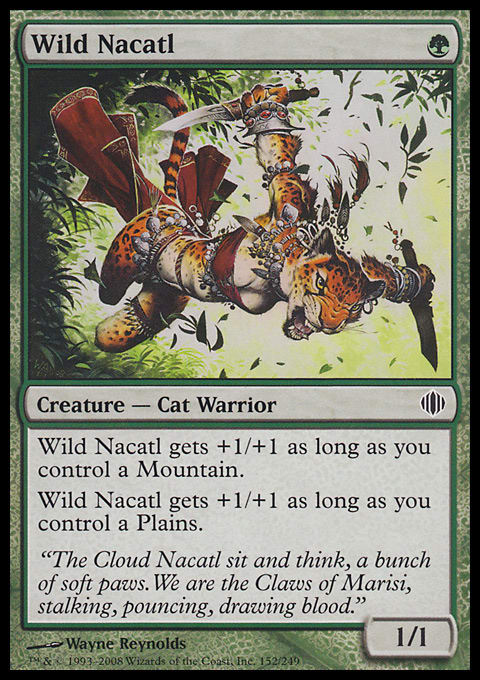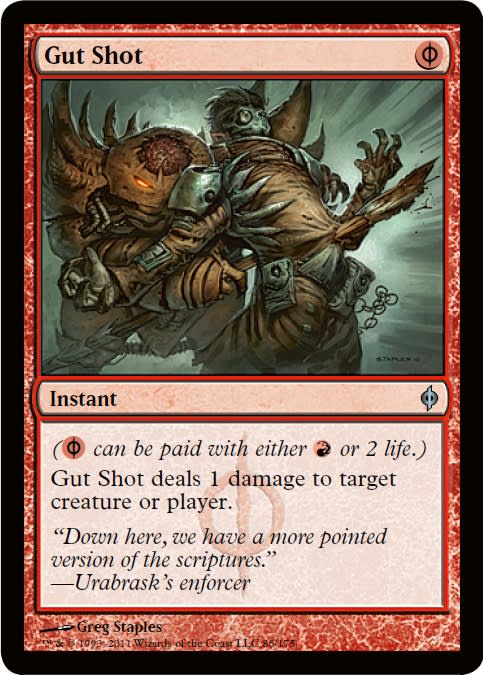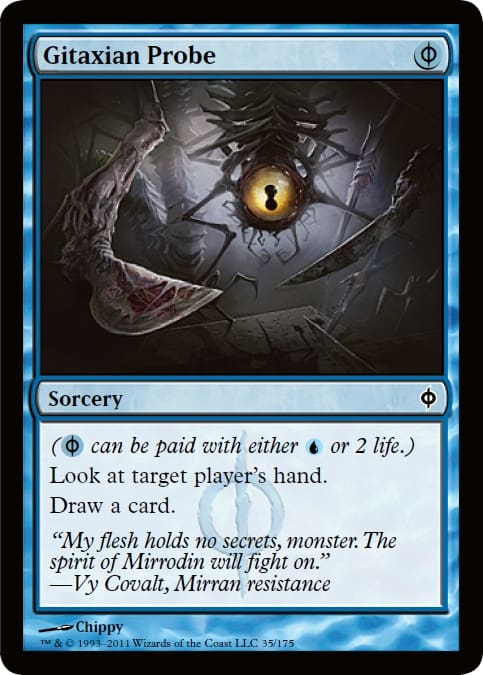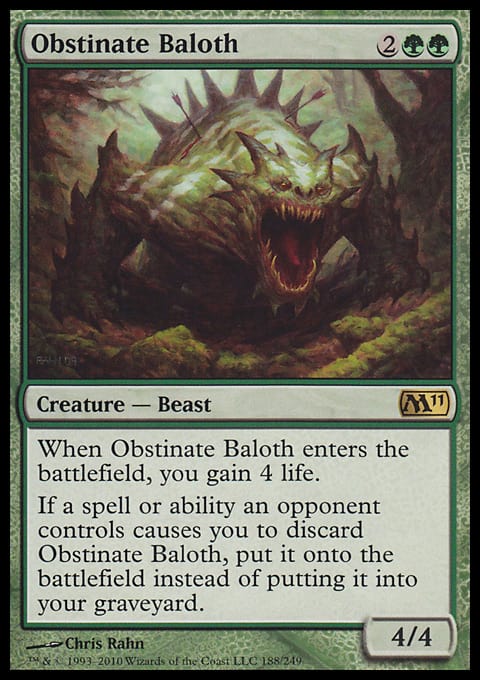So, this article is going to be dealing with the following quote from one of Drew Levin’s articles over on SCG. Levin writes the following:
So, what is a force multiplier? In military terms, a force multiplier refers to an attribute (e.g. technology or a tactic) or a combination of attributes that make a given force more effective than that same force would be without it. Thus, if a given technology gives a military force an effectiveness equal to a force twice its size that doesn’t have the technology, that technology would act as a force multiplier of 2×.
The concepts extend to Magic because Magic cards all have a certain effect on the game in a vacuum. Take, for example, Magma Spray. Magma Spray deals 2 damage to target creature and exiles it when it dies. This is what the card does in the vacuum and what it does in every game you play it.
However, sometimes a card can do more. What happens if your opponent has Jackal Pup in play? All of a sudden, if you Magma Spray the Jackal Pup, not only do you kill the Jackal Pup (what your Magma Spray does in a vacuum), but your opponent also takes 2 damage. Thus, your Magma Spray has achieved an “extra” Shock. In this case, the Jackal Pup’s drawback acted as a force multiplier in your favor.
So, let’s take a look at this idea in action.
Countering Your Removal Spell Versus Replacing My Threat
This is the situation in which the idea of a force multiplier is more evident. If I counter your removal spell, I have one extra swing with my dude. If you replace your turn-one Wild Nacatl, you don’t get to attack with it on turn two, whereas I can attack with my Delver. Thus, we still traded one card for one card (counterspell for removal or threat for removal), but by playing the counterspell instead of replacing my threat, I had an extra Lightning Bolt out of the deal. Thus, my Delver of Secrets acted as a force multiplier for my Daze.
Countering Your Dude Versus Killing Your Dude
These interactions are the same if you just look at the interaction. In this case, the creature in play acts as a force multiplier again for the removal spell or the counterspell. Thus, Dazing your dude and Plowing your dude ends up achieving the same thing in the short term.
So, what is the difference that Levin is getting at here? Why do we have to understand the differences between aggro and aggro-control, and how does it impact our ability to play the game?
A Key Difference between Aggro and Aggro-Control
The main difference here lies in deck design. As a whole, aggro is designed with redundancy in mind. It is designed to simply power through opposition. Each card is designed to do its thing with minimal support from the other cards. The strategy relies on consistency and redundancy to succeed.
Aggro-control, on the other hand, relies on its cards working together. The center of aggro-control is taking advantage of its creatures as force multipliers for its spells. This is why it is crucial as an aggro-control player not only to play your Daze or Mana Leak, but to play it at the correct time. You need to achieve the proper degree of force multiplication with your spells in order to win.
Let’s look at this from another standpoint. First, here are some decklists for reference.
"Zoo by Jeremy Blair"
- Creatures (22)
- 2 Knight of the Reliquary
- 3 Qasali Pridemage
- 4 Grim Lavamancer
- 4 Kird Ape
- 4 Tarmogoyf
- 4 Wild Nacatl
- 1 Gaddock Teeg
- Spells (18)
- 2 Fireblast
- 2 Lightning Helix
- 2 Price of Progress
- 3 Path to Exile
- 4 Lightning Bolt
- 4 Chain Lightning
- 1 Umezawa's Jitte
- Lands (20)
- 1 Forest
- 1 Mountain
- 1 Plains
- 1 Savannah
- 1 Verdant Catacombs
- 2 Taiga
- 3 Arid Mesa
- 3 Plateau
- 3 Wooded Foothills
- 4 Windswept Heath
- Sideboard (15)
- 2 Tormod's Crypt
- 4 Ancient Grudge
- 3 Mindbreak Trap
- 1 Path to Exile
- 1 Price of Progress
- 1 Pyroblast
- 1 Ravenous Trap
- 2 Red Elemental Blast
"W/U Delver by Gerry Thompson"
- Creatures (15)
- 3 Restoration Angel
- 4 Delver of Secrets
- 4 Snapcaster Mage
- 4 Geist of Saint Traft
- Spells (23)
- 1 Divine Offering
- 1 Gut Shot
- 2 Dismember
- 2 Thought Scour
- 4 Mana Leak
- 4 Vapor Snag
- 3 Gitaxian Probe
- 4 Ponder
- 2 Sword of Feast and Famine
- Lands (22)
- 2 Plains
- 9 Island
- 3 Moorland Haunt
- 4 Glacial Fortress
- 4 Seachrome Coast
- Sideboard (15)
- 2 Ratchet Bomb
- 1 Phyrexian Metamorph
- 2 Consecrated Sphinx
- 3 Phantasmal Image
- 1 Divine Offering
- 1 Amass the Components
- 3 Timely Reinforcements
- 2 Ghost Quarter
Let’s say that in Game 1, you manage to put into play against these decks an enchantment with the following text:
“Creatures cannot attack.”
What happens?
If you are against Delver and at 3 life or greater, you have probably just won the game. Assuming you have more cards in your library than the Delver player (it’s not unreasonable with all the Ponder/Thought Scour/Gitaxian Probe stuff Delver is doing), you can simply never cast a creature. That leaves Delver with only one Gut Shot and one Snapcaster Mage flashing back Gut Shot as ways of dealing damage to you. In that case, the game is basically over.
But what about against Zoo? Well, you’ve cut off an angle of attack, but Zoo can easily still draw enough direct damage to just kill you. Sure, your card is effective and relevant, but Zoo is not by any means cold to it. The key is in the differences between the two spell suites:
Zoo’s (relevant) spell suite:
- 2 Fireblast
- 4 Lightning Bolt
- 2 Lightning Helix
- 3 Path to Exile
- 2 Price of Progress
- 4 Chain Lightning
Delver’s (relevant) spell suite:
- 2 Dismember
- 1 Divine Offering
- 1 Gut Shot
- 4 Mana Leak
- 2 Thought Scour
- 4 Vapor Snag
- 3 Gitaxian Probe
- 4 Ponder
I’ve removed the Equipment to focus exclusively on the instants and sorceries. The difference between these two spell suites underlines the strategic differences between what the two decks are trying to accomplish. Zoo’s spell suite is a self-contained entity. It is designed to be able to be effective without much going on. Essentially, each spell in Zoo is selected based on its capability in a vacuum. It’s selected based on its primary effect.
Delver’s spells, on the other hand, are designed to support its creature suite. They are designed to be effective at disrupting the opponent’s game plan enough for Delver to push through 20 damage via the combat phase.
Ponder, Gitaxian Probe, and Thought Scour actually do next to nothing in a vacuum; however, they are extremely powerful within the context in which Delver puts them. Vapor Snag also has a very tiny effect in a vacuum, but once again, it is one of Delver’s best card because of the context in which it is used. Delver’s only real cards that are “efficient” in the same manner as Zoo’s spells are the two Dismembers, the four Mana Leaks, and the one Divine Offering. Everything else is designed to support the creature-based assault.
This is why the hypothetical “creatures can’t attack” card is devastating for Delver and not for Zoo. The card is devastating for Delver because Delver relies on its creatures to act as force multipliers. Without the ability to use these force multipliers, the deck falls apart. Zoo, on the other hand, simply has to switch plans. Given sufficient time, the other plan will still get there. Zoo has another plan. Delver doesn’t. Zoo relies on the raw power and redundancy of its spells to get there. Delver relies on the contextual power of its spells, which have their effects multiplied by its creatures.
Practical applications
So, how does this knowledge affect us? There is a tactical consideration that you can draw from this:- Because aggro decks such as Zoo rely on redundancy and the individual quality of their cards, you can beat them by presenting threats that are strong against the cards Zoo plays. You are operating against the actual cards. Play enough cards such as Timely Reinforcements and Obstinate Baloth, and you will beat Zoo.
- Against aggro-control decks such as Delver, you can’t rely on beating individual cards because Delver is all about putting cards in context. Thus, you need a strategic, and not a tactical, focus. There is no such thing as a card that is strong against Delver—the strength and efficacy of the cards Delver plays rely on the specific game state (context).
It’s hard to provide specific examples for Delver because everything is context-dependent. Like I said, the entire point of aggro-control is to create positions in which its spells are contextually powerful. Thus, each individual position has to be looked at separately. However, as a general principle, consider the difference between draws in which Delver is able to untap with a turn-one transformed Delver and draws in which it doesn’t.
The reason a turn-one transformed Delver is so powerful is that it allows Delver to begin playing the contextual game immediately due to the presence of one of its force multipliers. Thus, denying a turn-one Delver is a relevant part of neutering the deck.
Conclusion
The principle of force multipliers applies in a variety of ways to Magic, but it is particularly important to understanding the variable efficacy of cards such as Mana Leak, and it’s thus a central part of the game plans of decks like Delver. By abstracting and identifying the force multipliers, you can look for vulnerable locations to attack decks that rely on this idea (both tactically and strategically), thus increasing your own chances.
Chingsung Chang
Conelead most everywhere and on MTGO
Khan32k5 at gmail dot com
P.S. In other news, I think my framework for my version of Grand Unified Theory is complete. I will be writing about it when I have it fully hashed out.





























